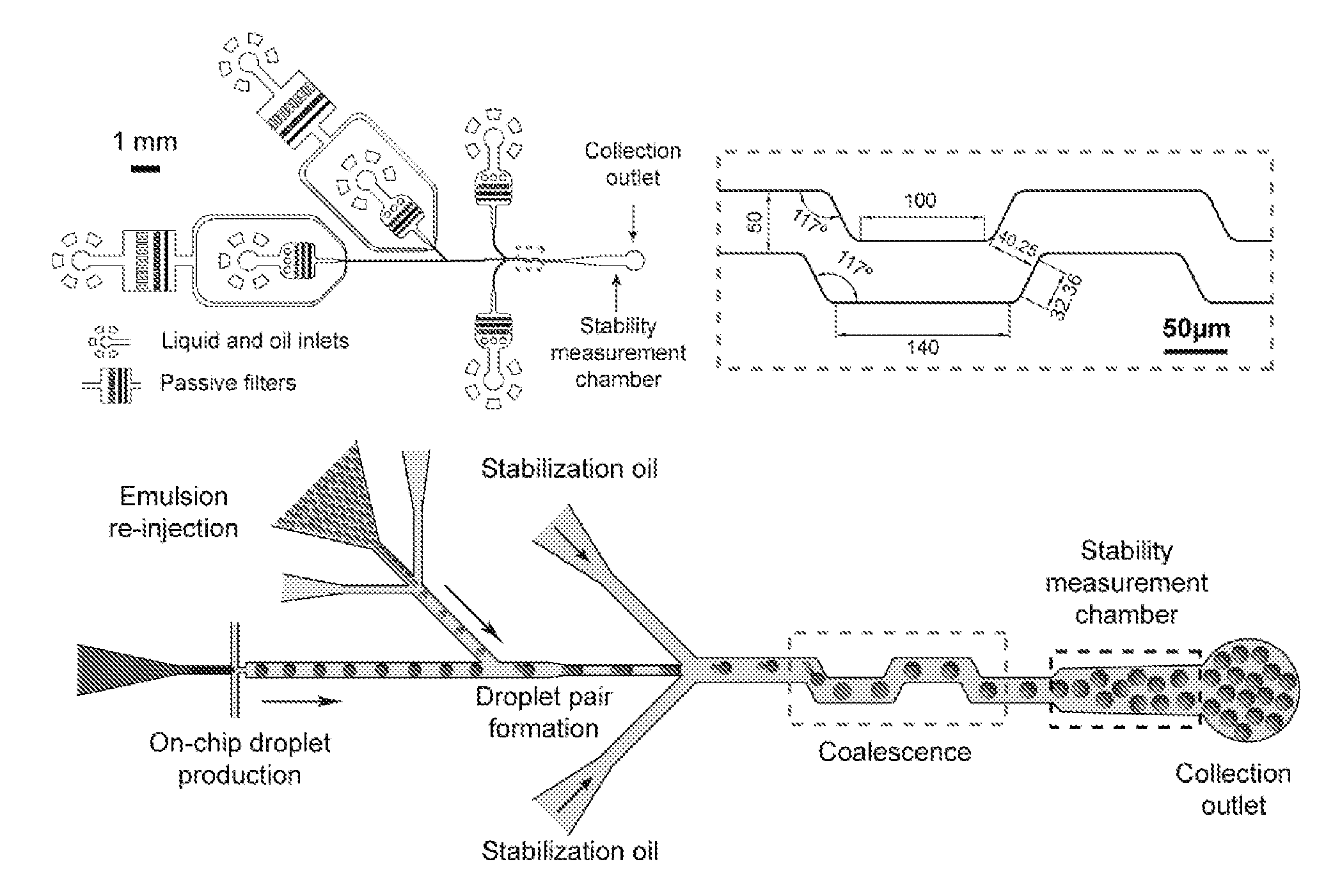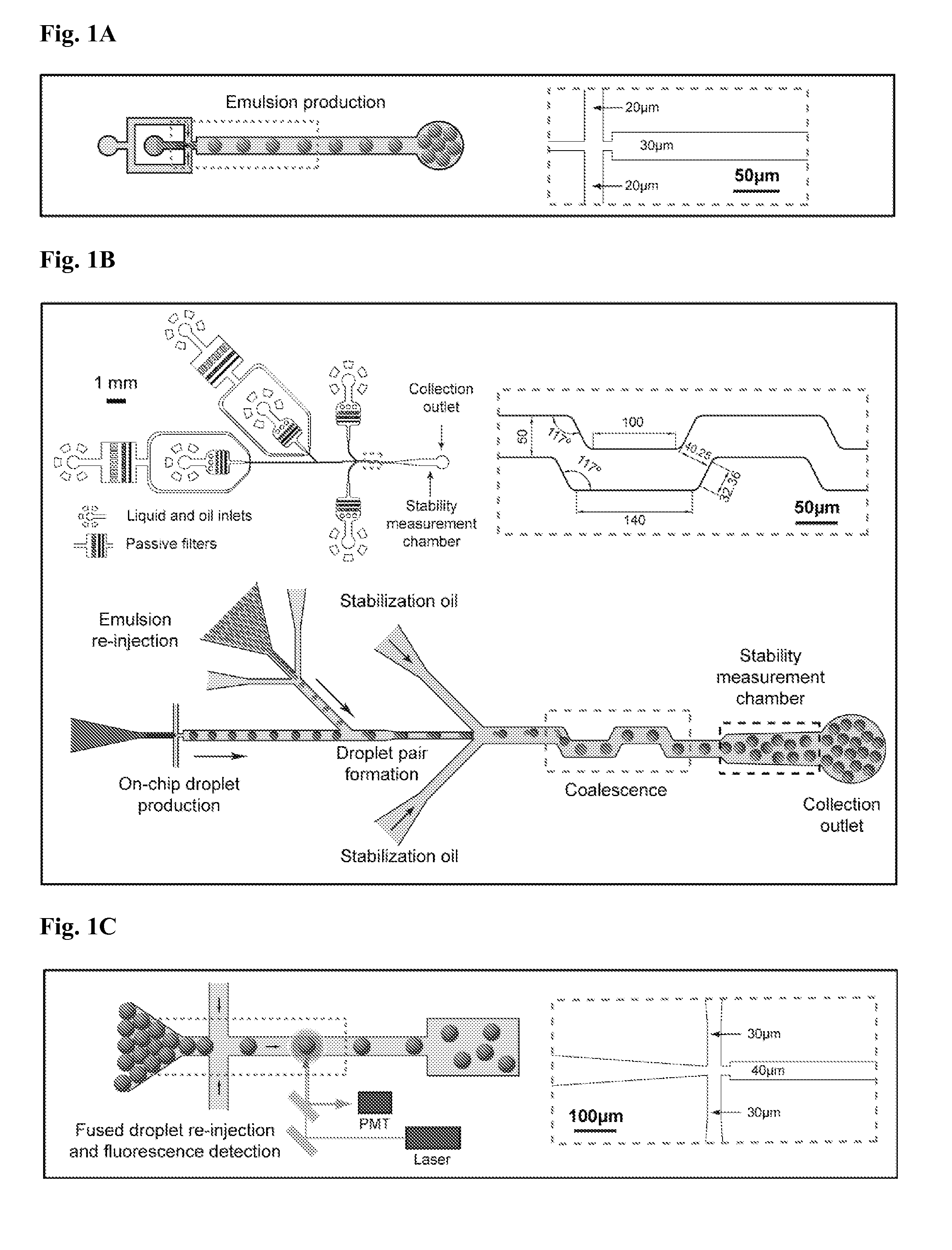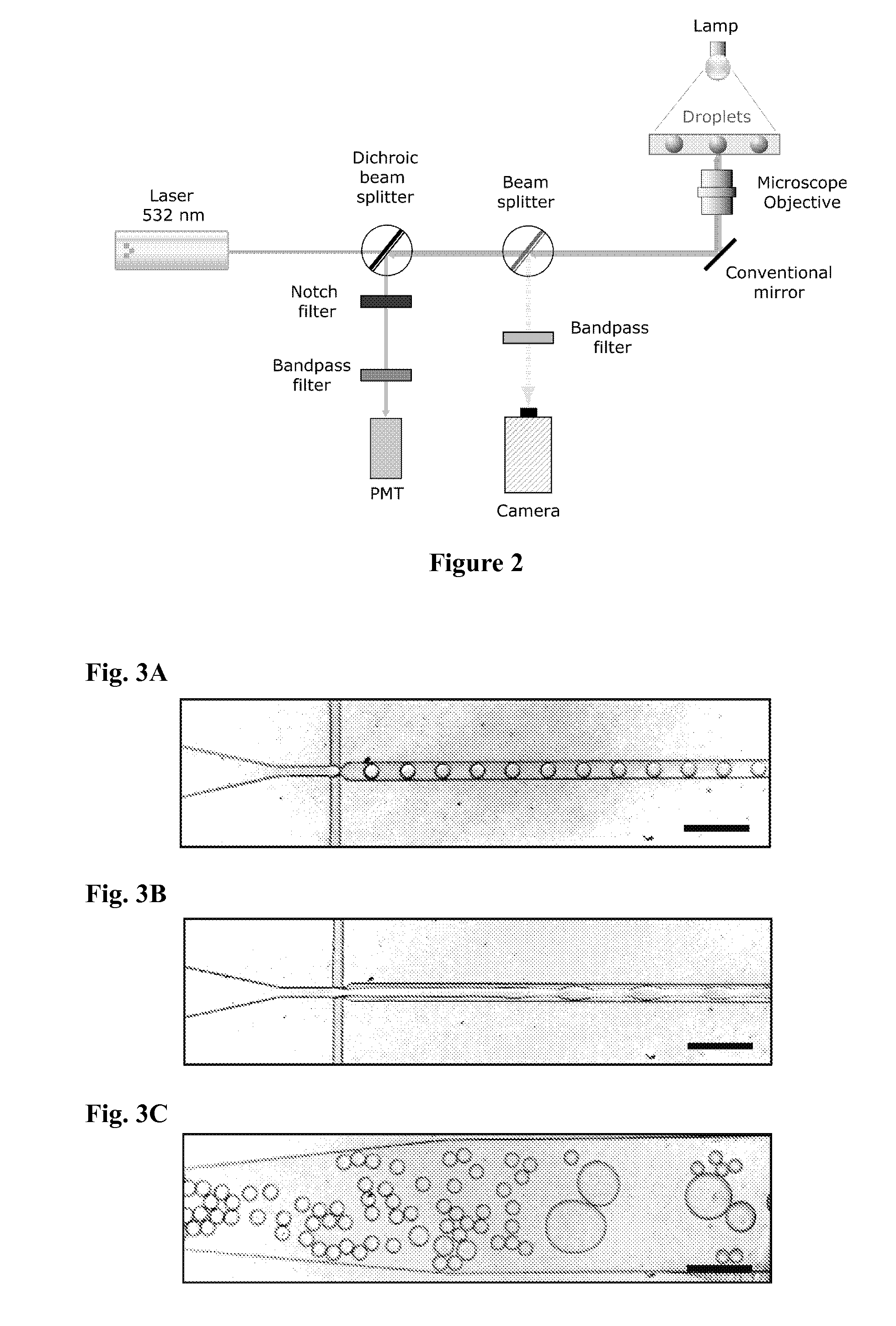Microfluidic system and methods for highly selective droplet fusion
- Summary
- Abstract
- Description
- Claims
- Application Information
AI Technical Summary
Benefits of technology
Problems solved by technology
Method used
Image
Examples
example 1
Microfluidics Device Fabrication and Running
[0181]Rectangular microfluidic channels were fabricated using soft lithography (Xia and Whitesides, 2008) by pouring poly(dimethylsiloxane) (PDMS, Sylgard 184, Dow Corning Corp.) onto a positive-relief silicon wafer (SILTRONIX) patterned with SU-8 photoresist (Microchem Corp). Curing agent was added to PDMS base to a final concentration of 10% (w / w), degassed and poured over the mould for crosslinking at 65° C. for 12 hours. The structured PDMS layer was peeled off the mould and the inlet and outlet holes were punched with a 0.75 mm-diameter Harris Uni-Core biopsy punch (Electron Microscopy Sciences). The microchannels were sealed by bonding the PDMS to glass using an oxygen plasma (PlasmaPrep 2 plasma oven; GaLa Instrumente GmbH). The channels were treated with surface coating agent (Aquapel, PPG Industries) to make it hydrophobic and subsequently flushed with nitrogen. Fluorinated oil FC40 (3M) containing different co...
example 2
[0205]The inventors herein disclose a system for passive droplet separation using hydrodynamics, allowing fast and efficient fractionation of droplets with a difference in volume of as small as 2.33-fold (corresponding to a 1.33-fold difference in diameter of spherical droplets). The utility of this system was demonstrated by combining this system with the passive droplet fusion system of the invention to create an integrated microfluidic device allowing the preparation of highly monodisperse pairwise fused droplets. The reliability of the system was confirmed by performing fluorescent analysis of fused and size-fractionated droplets after collection off-chip and reinjection.
[0206]To develop the passive droplet separation system, firstly two types of droplets were mixed on the same microfluidic chip and the droplets were analyzed after size-dependent sorting. The microfluidic chips, containing rectangular channels, were fabricated using standard soft lithography methods as described...
example 3
[0214]This example illustrates the selective coalescence of surfactant-stabilized droplets induced by the flow in microfluidic system. Individual surfactant-stabilized droplets from the emulsion were selectively coalesced with other droplets partially stabilized by the surfactant. The inventors showed selective pairwise and even multiple fusion events in highly controllable manner not feasible in prior art systems.
[0215]Material and Methods
[0216]Fabrication and Operation of Microfluidic Device
[0217]The microfluidic chip, containing rectangular channels 20 μm deep, was fabricated using standard soft lithography methods. Briefly, SU-8 2025 photoresist (Microchem Corp.) was poured onto a silicon wafer (Siltronix), patterned by UV exposure (MJB3 mask aligner, SUSS MicroTec) through a photolithography mask and subsequently developed with SU-8 developer (Microchem Corp). Curing agent was added to poly(dimethylsiloxane) PDMS base to a final concentration of 10% (w / w), degassed and poured o...
PUM
| Property | Measurement | Unit |
|---|---|---|
| length | aaaaa | aaaaa |
| width | aaaaa | aaaaa |
| width | aaaaa | aaaaa |
Abstract
Description
Claims
Application Information
 Login to View More
Login to View More - R&D
- Intellectual Property
- Life Sciences
- Materials
- Tech Scout
- Unparalleled Data Quality
- Higher Quality Content
- 60% Fewer Hallucinations
Browse by: Latest US Patents, China's latest patents, Technical Efficacy Thesaurus, Application Domain, Technology Topic, Popular Technical Reports.
© 2025 PatSnap. All rights reserved.Legal|Privacy policy|Modern Slavery Act Transparency Statement|Sitemap|About US| Contact US: help@patsnap.com



